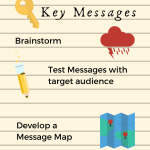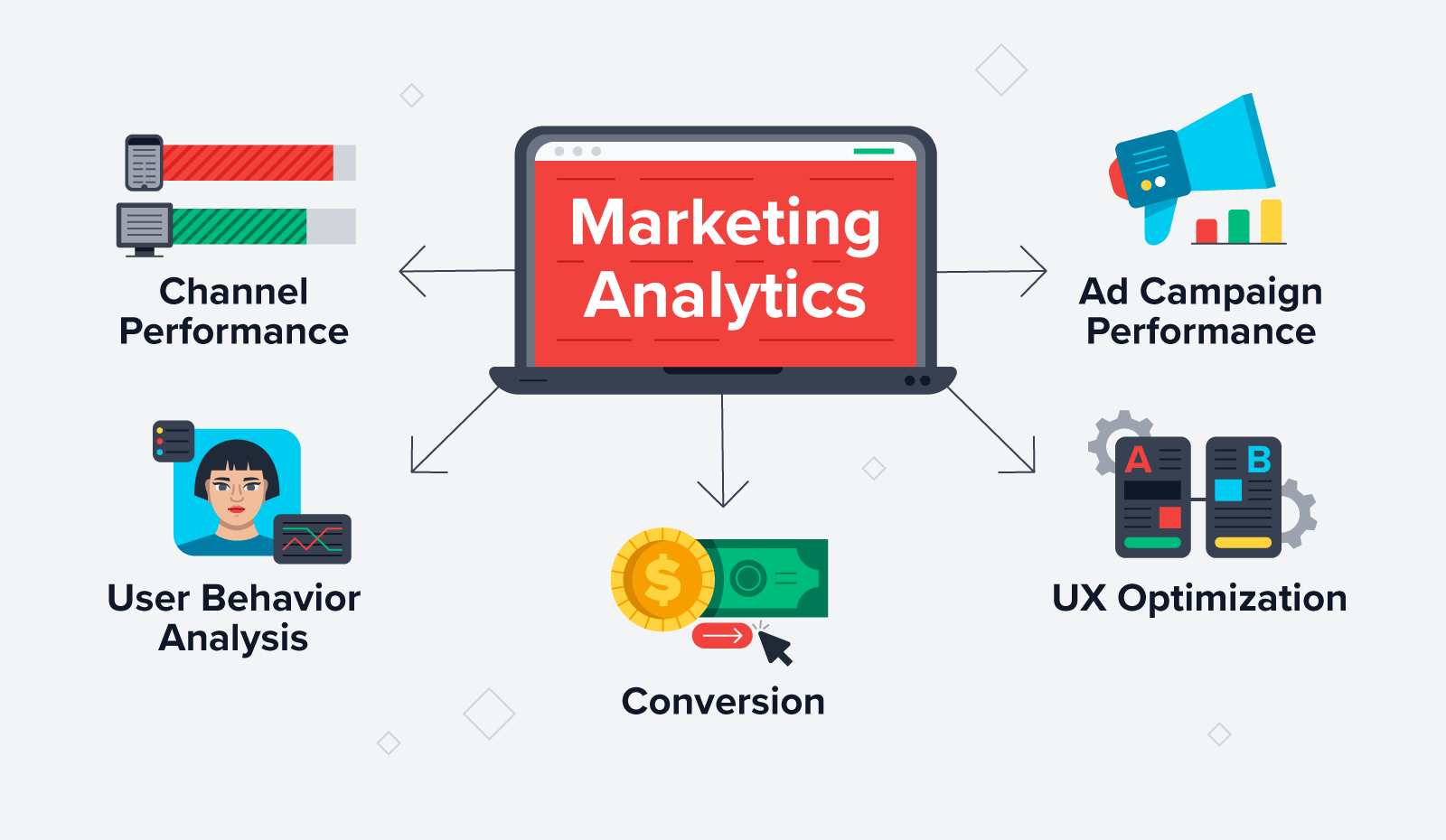-
What is the Entry-Level Job for Marketing Analytics?
- 1. What Skills Are Required for an Entry-Level Marketing Analytics Job?
- 2. What Are Common Job Titles for Entry-Level Marketing Analytics Roles?
- 3. What Are the Typical Responsibilities in an Entry-Level Marketing Analytics Job?
- 4. What Educational Background is Needed for Entry-Level Marketing Analytics Jobs?
- 5. What Career Growth Opportunities Exist in Marketing Analytics?
- How to start a career in marketing analytics?
- Is a marketing analyst an entry-level job?
- What does marketing analytics start with?
- What jobs can I get with a marketing analytics degree?
- Frequently Asked Questions from Our Community
Marketing analytics is a rapidly growing field that combines data analysis, strategic thinking, and business acumen to drive decision-making and optimize marketing efforts. For those looking to break into this dynamic industry, entry-level roles serve as the foundation for building a successful career. These positions often focus on collecting, interpreting, and presenting data to help organizations understand customer behavior, measure campaign performance, and identify growth opportunities. Common entry-level jobs include Marketing Analyst, Data Analyst, and Business Intelligence Analyst. This article explores the key responsibilities, required skills, and career pathways for those starting their journey in marketing analytics, offering insights to help aspiring professionals navigate this exciting field.
What is the Entry-Level Job for Marketing Analytics?
Marketing analytics is a growing field that combines data analysis, marketing strategies, and business insights to help companies make informed decisions. Entry-level jobs in this field are designed for individuals who are just starting their careers and want to build a foundation in data-driven marketing. These roles typically require a mix of technical, analytical, and communication skills.
See Also For Those in Marketing Analytics, What Tools Do You Use/Recommend?
For Those in Marketing Analytics, What Tools Do You Use/Recommend?1. What Skills Are Required for an Entry-Level Marketing Analytics Job?
To succeed in an entry-level marketing analytics role, candidates need a combination of technical and soft skills. Key technical skills include proficiency in data analysis tools like Excel, SQL, and Python, as well as familiarity with data visualization tools such as Tableau or Power BI. Soft skills like critical thinking, problem-solving, and effective communication are equally important to interpret data and present insights to stakeholders.
| Technical Skills | Soft Skills |
|---|---|
| Data Analysis (Excel, SQL, Python) | Critical Thinking |
| Data Visualization (Tableau, Power BI) | Problem-Solving |
| Marketing Platforms (Google Analytics, CRM tools) | Communication |
2. What Are Common Job Titles for Entry-Level Marketing Analytics Roles?
Entry-level positions in marketing analytics often have titles such as Marketing Analyst, Data Analyst, Business Analyst, or Digital Marketing Analyst. These roles focus on collecting, analyzing, and interpreting data to support marketing campaigns and strategies. Some companies may also use titles like Junior Marketing Analyst or Associate Marketing Analyst to indicate entry-level positions.
See Also Seeking Recommendations: Customer Data Platform (CDP)?
Seeking Recommendations: Customer Data Platform (CDP)?| Job Title | Primary Responsibilities |
|---|---|
| Marketing Analyst | Analyze campaign performance and customer data |
| Data Analyst | Collect and interpret data for decision-making |
| Digital Marketing Analyst | Focus on online marketing metrics and strategies |
3. What Are the Typical Responsibilities in an Entry-Level Marketing Analytics Job?
Entry-level marketing analytics roles involve tasks such as data collection, cleaning, and analysis. Professionals in these roles often create reports and dashboards to visualize data trends and provide actionable insights. They may also assist in A/B testing, campaign performance tracking, and customer segmentation to optimize marketing efforts.
| Responsibility | Description |
|---|---|
| Data Collection | Gather data from various sources like CRM and web analytics |
| Data Cleaning | Ensure data accuracy by removing errors and inconsistencies |
| Data Analysis | Interpret data to identify trends and insights |
4. What Educational Background is Needed for Entry-Level Marketing Analytics Jobs?
Most entry-level marketing analytics roles require a bachelor’s degree in fields like Marketing, Business, Statistics, or Computer Science. Some employers may also prefer candidates with coursework or certifications in data analysis, digital marketing, or business intelligence. Certifications like Google Analytics or HubSpot can also enhance a candidate’s profile.
See Also Looking for Real Life Marketing/Communications Examples for a Class I'm Teaching!
Looking for Real Life Marketing/Communications Examples for a Class I'm Teaching!| Degree | Relevance |
|---|---|
| Marketing | Understanding of marketing principles and strategies |
| Business | Knowledge of business operations and decision-making |
| Statistics | Strong foundation in data analysis and interpretation |
5. What Career Growth Opportunities Exist in Marketing Analytics?
Starting in an entry-level marketing analytics role can lead to various career advancement opportunities. With experience, professionals can move into roles like Senior Marketing Analyst, Marketing Manager, or Data Scientist. Specializing in areas like customer analytics, predictive modeling, or digital marketing can also open doors to higher-level positions.
| Career Path | Description |
|---|---|
| Senior Marketing Analyst | Lead analytics projects and mentor junior analysts |
| Marketing Manager | Oversee marketing strategies and campaigns |
| Data Scientist | Focus on advanced data modeling and machine learning |
How to start a career in marketing analytics?

 Lead Generation Career Paths
Lead Generation Career PathsUnderstanding the Basics of Marketing Analytics
To start a career in marketing analytics, it is essential to understand the foundational concepts. Marketing analytics involves analyzing data to measure the effectiveness of marketing strategies and campaigns. Here are the key steps to get started:
- Learn the fundamentals of marketing, including the 4Ps (Product, Price, Place, Promotion).
- Familiarize yourself with data analysis tools such as Excel, Google Analytics, and SQL.
- Understand the importance of key performance indicators (KPIs) like ROI, conversion rates, and customer acquisition costs.
Acquiring Relevant Education and Certifications
Education and certifications can significantly boost your credibility in marketing analytics. Here’s how to approach this:
- Pursue a degree in marketing, business, or data science to build a strong academic foundation.
- Enroll in specialized courses or certifications such as Google Analytics Certification or HubSpot Content Marketing Certification.
- Consider advanced certifications like Certified Marketing Analyst (CMA) to stand out in the field.
Gaining Practical Experience
Practical experience is crucial for mastering marketing analytics. Here’s how to gain hands-on experience:
- Internships: Apply for internships in marketing departments or agencies to work on real-world projects.
- Freelancing: Offer your services on platforms like Upwork or Fiverr to analyze marketing data for small businesses.
- Personal Projects: Create your own marketing campaigns and analyze their performance using tools like Google Analytics.
Building a Strong Professional Network
Networking is vital for career growth in marketing analytics. Follow these steps to build connections:
- Join professional organizations like the American Marketing Association (AMA) or Digital Analytics Association (DAA).
- Attend industry conferences, webinars, and workshops to meet experts and learn about the latest trends.
- Connect with professionals on LinkedIn and engage in discussions related to marketing analytics.
Staying Updated with Industry Trends
The field of marketing analytics is constantly evolving. To stay ahead, follow these steps:
- Subscribe to industry blogs, newsletters, and podcasts such as Marketing Land or Analytics Vidhya.
- Follow thought leaders and influencers on social media platforms like Twitter and LinkedIn.
- Experiment with emerging tools and technologies like AI-driven analytics platforms and predictive modeling.
Is a marketing analyst an entry-level job?

What Does a Marketing Analyst Do?
A marketing analyst is responsible for collecting, analyzing, and interpreting data to help businesses make informed decisions about their marketing strategies. This role involves working with various tools and platforms to track campaign performance, customer behavior, and market trends. Key responsibilities include:
- Data Collection: Gathering data from multiple sources such as surveys, social media, and sales reports.
- Data Analysis: Using statistical methods and software to analyze data and identify patterns.
- Reporting: Creating detailed reports and presentations to communicate findings to stakeholders.
Is a Marketing Analyst Position Considered Entry-Level?
While some marketing analyst positions can be entry-level, many require prior experience or specialized skills. Entry-level roles typically involve more basic tasks such as data collection and preliminary analysis, while more advanced positions may require expertise in data modeling, predictive analytics, and advanced software tools. Factors to consider include:
- Educational Background: A degree in marketing, business, or a related field is often required.
- Technical Skills: Proficiency in tools like Excel, SQL, and data visualization software.
- Experience: Internships or relevant work experience can be beneficial for securing an entry-level role.
What Skills Are Needed for an Entry-Level Marketing Analyst?
To succeed as an entry-level marketing analyst, certain skills are essential. These include both technical and soft skills that enable effective data analysis and communication. Key skills include:
- Analytical Skills: Ability to interpret data and draw meaningful conclusions.
- Communication Skills: Presenting findings clearly to non-technical stakeholders.
- Technical Proficiency: Familiarity with data analysis tools and software.
What Are the Typical Responsibilities of an Entry-Level Marketing Analyst?
An entry-level marketing analyst typically handles tasks that support the overall marketing strategy. These responsibilities are often more focused on data gathering and basic analysis. Common tasks include:
- Data Entry and Management: Organizing and maintaining databases.
- Basic Reporting: Creating simple reports and dashboards.
- Assisting Senior Analysts: Supporting more experienced analysts with complex projects.
How to Start a Career as a Marketing Analyst?
Starting a career as a marketing analyst involves a combination of education, skill development, and networking. Here are some steps to consider:
- Earn a Relevant Degree: Pursue a degree in marketing, business, or a related field.
- Gain Experience: Seek internships or part-time roles in data analysis or marketing.
- Build a Portfolio: Showcase your analytical skills through projects or case studies.
What does marketing analytics start with?

Understanding the Basics of Marketing Analytics
Marketing analytics begins with a solid understanding of its foundational concepts. This involves grasping the purpose of marketing analytics, which is to measure, analyze, and interpret data to improve marketing strategies. Key elements include:
- Data Collection: Gathering data from various sources such as websites, social media, and customer interactions.
- Data Processing: Organizing and cleaning the collected data to ensure accuracy and usability.
- Data Analysis: Using statistical tools and techniques to extract meaningful insights from the data.
Setting Clear Objectives
Before diving into data analysis, it's crucial to define clear objectives. This step ensures that the analytics efforts are aligned with business goals. Important considerations include:
- Identifying Key Performance Indicators (KPIs): Determining which metrics will best measure success.
- Defining Target Audiences: Understanding who the marketing efforts are aimed at.
- Establishing Benchmarks: Setting standards to compare current performance against past results or industry averages.
Choosing the Right Tools and Technologies
Selecting appropriate tools is essential for effective marketing analytics. The right technology can streamline data collection and analysis processes. Key tools include:
- Analytics Platforms: Such as Google Analytics or Adobe Analytics for tracking website and campaign performance.
- Customer Relationship Management (CRM) Systems: For managing and analyzing customer interactions and data.
- Data Visualization Tools: Like Tableau or Power BI for creating visual representations of data insights.
Data Integration and Management
Effective marketing analytics requires integrating data from multiple sources and managing it efficiently. This step ensures a comprehensive view of marketing performance. Important aspects include:
- Data Integration: Combining data from various platforms to create a unified dataset.
- Data Quality Management: Ensuring the data is accurate, complete, and up-to-date.
- Data Security: Implementing measures to protect sensitive information from breaches and unauthorized access.
Analyzing and Interpreting Data
The core of marketing analytics lies in analyzing and interpreting the data to derive actionable insights. This involves:
- Descriptive Analytics: Understanding what has happened in the past through data summarization.
- Predictive Analytics: Using historical data to forecast future trends and behaviors.
- Prescriptive Analytics: Providing recommendations on what actions to take based on the data insights.
What jobs can I get with a marketing analytics degree?

Marketing Analyst
A Marketing Analyst is one of the most common roles for someone with a marketing analytics degree. In this position, you will analyze market trends, consumer behavior, and campaign performance to help businesses make data-driven decisions. Key responsibilities include:
- Collecting and interpreting data from various marketing channels.
- Creating reports and dashboards to visualize insights.
- Collaborating with marketing teams to optimize strategies based on data findings.
Data Scientist
With a marketing analytics degree, you can transition into a Data Scientist role, focusing on advanced data analysis and predictive modeling. This role involves:
- Using machine learning algorithms to predict consumer behavior.
- Developing data-driven models to improve marketing strategies.
- Working with large datasets to uncover hidden patterns and trends.
Digital Marketing Manager
A Digital Marketing Manager oversees online marketing campaigns and uses analytics to measure their effectiveness. Responsibilities include:
- Planning and executing digital marketing strategies across platforms like social media, email, and search engines.
- Analyzing campaign performance using tools like Google Analytics.
- Adjusting strategies in real-time based on data insights.
Business Intelligence Analyst
As a Business Intelligence Analyst, you will focus on transforming raw data into actionable insights for business growth. Key tasks include:
- Designing and maintaining data warehouses and reporting systems.
- Providing strategic recommendations based on data analysis.
- Collaborating with stakeholders to identify key performance indicators (KPIs).
Market Research Analyst
A Market Research Analyst specializes in understanding market conditions and consumer preferences. This role involves:
- Conducting surveys and focus groups to gather consumer data.
- Analyzing competitors and identifying market opportunities.
- Presenting findings to stakeholders to guide business decisions.
Frequently Asked Questions from Our Community
What is an entry-level job in marketing analytics?
An entry-level job in marketing analytics typically involves roles such as Marketing Analyst, Data Analyst, or Business Analyst. These positions focus on collecting, analyzing, and interpreting data to help businesses make informed marketing decisions. Entry-level professionals often work with tools like Excel, Google Analytics, and SQL to track campaign performance, customer behavior, and market trends. Strong analytical skills and a basic understanding of marketing principles are essential for success in these roles.
What qualifications are needed for an entry-level marketing analytics job?
Most entry-level marketing analytics jobs require a bachelor's degree in fields such as Marketing, Business, Statistics, or Data Science. Employers also look for proficiency in data analysis tools like Excel, Tableau, or Python, as well as familiarity with marketing platforms such as Google Ads or HubSpot. Additionally, having certifications like Google Analytics Certification or SQL training can give candidates a competitive edge. Soft skills like problem-solving, communication, and attention to detail are equally important.
What does a typical day look like for an entry-level marketing analyst?
A typical day for an entry-level marketing analyst involves tasks such as data collection, cleaning datasets, and creating reports or dashboards to visualize findings. They may also assist in tracking campaign performance, identifying trends, and providing insights to improve marketing strategies. Collaboration with other teams, such as sales or product development, is common to ensure data-driven decisions align with business goals. Entry-level analysts often spend time learning new tools and techniques to enhance their analytical capabilities.
How can I advance my career in marketing analytics from an entry-level position?
To advance from an entry-level position in marketing analytics, focus on building expertise in advanced analytics tools like R, Python, or machine learning. Pursuing higher education, such as a master's degree in Data Science or Business Analytics, can also open doors to senior roles. Gaining experience in cross-functional projects and developing strong leadership skills will help you transition into roles like Senior Marketing Analyst, Marketing Manager, or Data Scientist. Networking and staying updated on industry trends are equally important for career growth.
Leave a Reply


Articles of interest